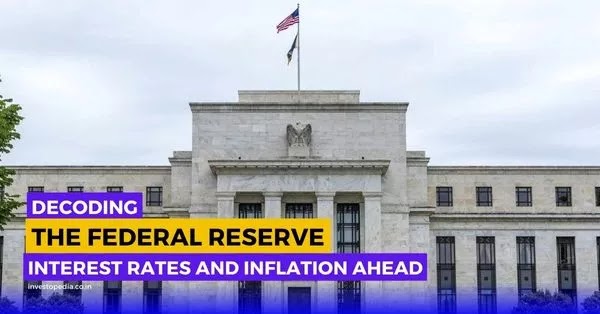Federal Reserve's July Meeting: Expectations for Interest Rate Hike and Inflation Outlook
Table Of Contents
Introduction
The upcoming Federal Reserve meeting has drawn significant attention, as it is expected to result in a notable increase in the benchmark lending rate—the highest in 22 years. This move comes just after the Fed had paused a series of rate hikes aimed at combating surging inflation. Furthermore, there are indications that this might not be the end of the tightening cycle, as investors anticipate hints about the possibility of another rate increase later this year. The decision will be closely scrutinized, and the outcome will have important implications for the economy and inflation outlook. In this article, we delve into the key factors driving the Fed's decision-making and explore the potential outcomes for the coming months.
1. Economic Data and the Path Forward
Following the conclusion of the July monetary policy meeting, investors will be keenly observing any signals regarding the potential timing of the next rate hike. The possibilities are threefold: a second consecutive rate hike in September, one in November, or no more rate hikes after July. The ultimate decision hinges on the economic data in the coming weeks, and there is uncertainty as to whether inflation will prove to be more resilient than expected. Fed Chair Jerome Powell's remarks at an upcoming gathering of central bankers and economists will likely provide additional insight into the Fed's thinking ahead of the September decision.
2. Optimism and Hope in the Economy
An encouraging development is the growing optimism among Americans about the economy and the potential easing of inflationary pressures. This newfound confidence is a result of inflation's slowdown and the economy's resilience in the face of rate hikes. As a result, concerns about an imminent recession have abated somewhat. Economists are noting improved business conditions and investors are increasingly optimistic about the Fed's ability to achieve a soft landing, wherein inflation is brought under control without causing an economic downturn.
3. Inflation's Slowdown and the Fed's Dilemma
Inflation has indeed shown signs of cooling down, with key indicators reflecting a deceleration in price growth. The Consumer Price Index and the Fed's preferred inflation gauge, the Personal Consumption Expenditures price index, have both registered lower increases compared to previous months. However, the Fed faces a delicate balancing act. While it desires to curtail inflationary pressures, it also wants to avoid signaling potential rate cuts too soon, as this could disrupt financial markets.
4. Labor Market Dynamics and Inflationary Pressure
The labor market is a critical factor in the inflation equation. Officials at the Fed are closely monitoring the balance between demand and supply in the labor market. A persistent imbalance could lead to continued wage growth and, subsequently, higher consumer prices. Service-providing industries, which are labor-intensive, may pass on higher labor costs to consumers. The forthcoming Employment Cost Index and second-quarter gross domestic product reports will provide crucial insights into the underlying inflationary pressures.
5. The Debate and Decision-Making at the Fed
As the Fed approaches its decision on interest rates, there is likely to be a vigorous debate among policymakers. While most previous decisions have been unanimous, a dissenting view may emerge this time due to the complex economic landscape. Some officials advocate for hiking in September to tackle inflation more aggressively, while others favor a more cautious approach, akin to easing off the gas pedal as they near their inflation-fighting goal.
Conclusion
The Federal Reserve's July meeting is undoubtedly a critical event that will shape the economic and inflationary outlook for the months ahead. With expectations of a rate hike and lingering uncertainties, investors and businesses alike will be closely monitoring the Fed's decisions and statements for clues about future monetary policy. The delicate balance between curbing inflation and avoiding economic disruption poses a formidable challenge for the central bank. As the meeting approaches, the nation's economic trajectory hangs in the balance, with the Fed's actions set to chart the course for the future.
